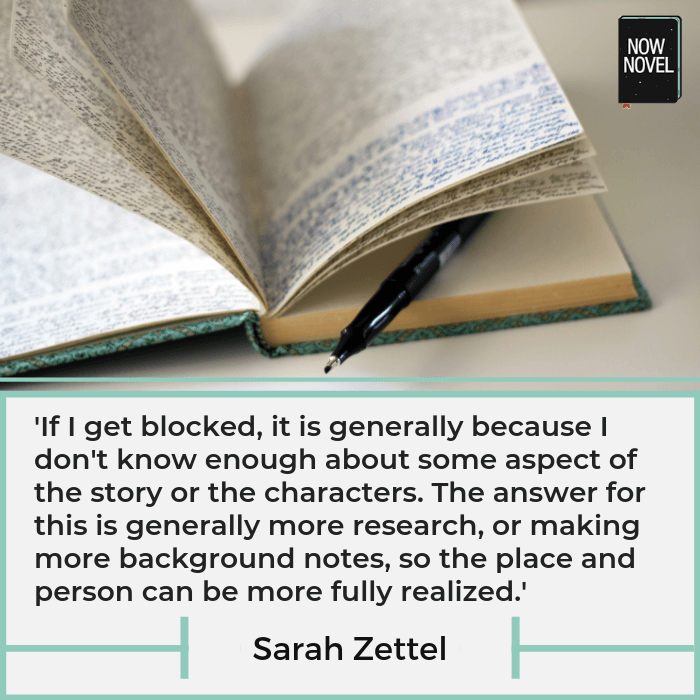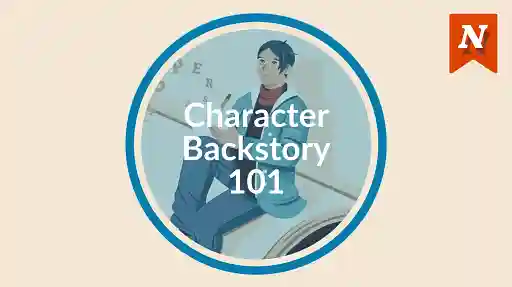In a novel, film or stage play, not every character needs to take center stage. Some characters play a minor role. Some add passing humour, obstacles, important advice or information. Read 5 ideas for writing background characters:
1. Try writing background characters for habitation
Often in beginning authors' manuscripts, characters' dwelling places read as strangely empty. Main characters move across an otherwise blank story canvas.
Background characters - who do not have complex arcs or development like more central players - help to fill this canvas. They give your world a stronger feeling of habitation. Your world reads more 'real', because your reader can sense their are many lives playing out in it, even if they are peripheral to the main story.
To use an example, in Virginia Woolf's classic novel Mrs Dalloway (1925), there is a scene where several characters' observe planes creating skywriting, and try to interpret what it means:
"Glaxo," said Mrs. Coates in a strained, awe-stricken voice, gazing straight up, and her baby, lying stiff and white in her arms, gazed straight up.
"Kreemo," murmured Mrs. Bletchley, like a sleep-walker. With his hat held out perfectly still in his hand, Mr. Bowley gazed straight up. All down the Mall people were standing and looking up into the sky. As they looked the whole world became perfectly silent, and a flight of gulls crossed the sky, first one gull leading, then another, and in this extraordinary silence and peace, in this pallor, in this purity, bells struck eleven times, the sound fading up there among the gulls.Virginia Woolf, Mrs Dalloway, pp. 16-17.
Mrs. Coates, Mrs. Bletchley and Mr. Bowley are all background characters. They do not recur throughout the story, and their private goals and desires don't feature. Yet the various characters in this scene pausing what they're doing to gaze up convey the idea of many lives unfolding in parallel in Woolf's London.

2. Use minor characters to highlight main characters' arcs
There's a comical moment in Charles Dickens' classic novel Great Expectations (1861) where a background, very minor character steals the scene and throws a key character's development into relief..
Dickens' protagonist Pip has inherited money from a mystery benefactor. He's thus risen in class overnight. Yet his humble past dogs him, in the form of the background character 'Trabb's boy' who follows him down the street, making fun of Pip's tailored makeover. Pip narrates:
I had not got as much further down the street as the post-office, when I again beheld Trabb's boy shooting round by a back way. This time, he was entirely changed. He wore the blue bag in the manner of my great-coat, and was strutting along the pavement towards me on the opposite side of the street, attended by a company of delighted young friends to whom he from time to time exclaimed, with a wave of his hand, “Don't know yah!” Words cannot state the amount of aggravation and injury wreaked upon me by Trabb's boy, when passing abreast of me, he pulled up his shirt-collar, twined his side-hair, stuck an arm akimbo, and smirked extravagantly by, wriggling his elbows and body, and drawling to his attendants, “Don't know yah, don't know yah, 'pon my soul don't know yah!”
Charles Dickens, Great Expectations (1861), full public domain text here.
The scene with Trabb's boy draws attention to the way Pip's style of dress has changed along with his windfall. It shows how his increase in wealth has also widened the distance between himself and the working class he came from. He looks, to Trabb's boy, like a pompous fool, hence the assumption Pip has become a snob ('Don't know yah!').
Dickens thus uses a passing background character to draw our attention to the ways Pip has changed. Dickens uses his background character to show Pip's evolution and the complex social dynamics between people from different social strata.
3. Use background characters to create atmosphere and mood
Blockbuster films and TV shows often employ extras to create the mood and atmosphere of a crowd. Whether to suggest the claustrophobic, electric energy of a battlefield or the joy of a rock concert. Background characters are useful for creating the atmosphere and mood in written stories, too.
In the example from Mrs Dalloway above, we see how Woolf uses additional background characters to create a sense of the awe and 'perfectly silent' atmosphere as people watch the skywriting.
J.K. Rowling also creates the focus of a crowd drawn together around a spectacle well. For example, when she describes a game of 'Quidditch' (a sport where players ride broomsticks) in Harry Potter and the Philosopher's Stone (1997):
Suddenly, people were pointing up at Harry all over the stands. His broom had started to roll over and over, with him only just managing to hold on. The whole crowd gasped.
J.K. Rowling, Harry Potter and the Sorcerer's Stone, p. 203.
Describing the reaction of the spectators, Rowling creates suspense over Harry's sudden predicament. The crowd's pointing and gasping create a vivid sense of the tense and suspenseful mood of the scene.
Rowling alternates the supporters of the school's different houses reacting as one with descriptions of individual characters' actions and reactions as the scene unfolds.
Together the use of main characters in the foreground and background spectators create tense mood and atmosphere.
4. Add background characters to shape key characters' decisions
Sometimes a relatively minor, even unnamed character may have a profound impact on a main character's trajectory. Minor characters' actions can prompt a more central character to make new choices.
Take, for example, the inciting incident in Kazuo Ishiguro's The Buried Giant (2015). In Ishiguro's novel set in early, post-Roman-occupation England, an elderly couple, Axl and Beatrice, set out to find their long-lost son. What prompts their departure (apart from their memory of and curiosity about their son) is a squabble over a candle the couple possess (a precious commodity).
Ishiguro uses nameless background characters' meanness and resentment regarding the candle to convey the sense of a tense land where resources (and kindness) are rare:
Axl saw the anger blaze in [Beatrice's] eyes. 'It's nothing but unkindness. That's all it is.' She said this quietly, almost under her breath, but looking straight at the pastor.
'Remove the candle from her,' the pastor said. 'Do as I say. Take it from her.'
As several hands reached towards her, it seemed to Axl she had not fully understood what the pastor said. For she stood in the middle of the jostling with a puzzled look, continuing to grip the candle as if only by some forgotten instinct.Kazuo Ishiguro, The Buried Giant (2015), p. 23.
Here, Ishiguro uses the actions of background characters' - their meanness and resentment, despite Axl and Beatrice's age - to create the watershed moment they decide to leave the village.
Ishiguro gives us just enough information about the minor characters in the scene for us to know their desire (the candle) and who they obey (the Pastor). Thanks to their less vivid depiction, our focus remains solely on Axl and Beatrice and their predicament.

5. Use background characters for mystery and suspense
Minor characters often add mystery and suspense precisely because the reader knows less about them.
Take, for example, the mysterious recluse Boo Radley in Harper Lee's To Kill a Mockingbird (1960). The siblings and their friend dare each other to creep into the Radleys' yard and touch the corner of Boo's house. So much mystique and suspense surrounds this character due to everything we're not told about him, at least at first.
Background characters who are shrouded in mystery and suspense may either later come to light in more human, compassionate terms, as Boo Radley does, when he helps the siblings, or remain sources of mystery and unanswered questions.
Develop character profiles in full and build a complete story outline now using the easy, step-by-step Now Novel dashboard.









Subplots and secondary/supporting characters can contrast central plots and main characters in ways you can never fully--or skillfully--tell.
Elias Mc Clellan - Over 5 years ago